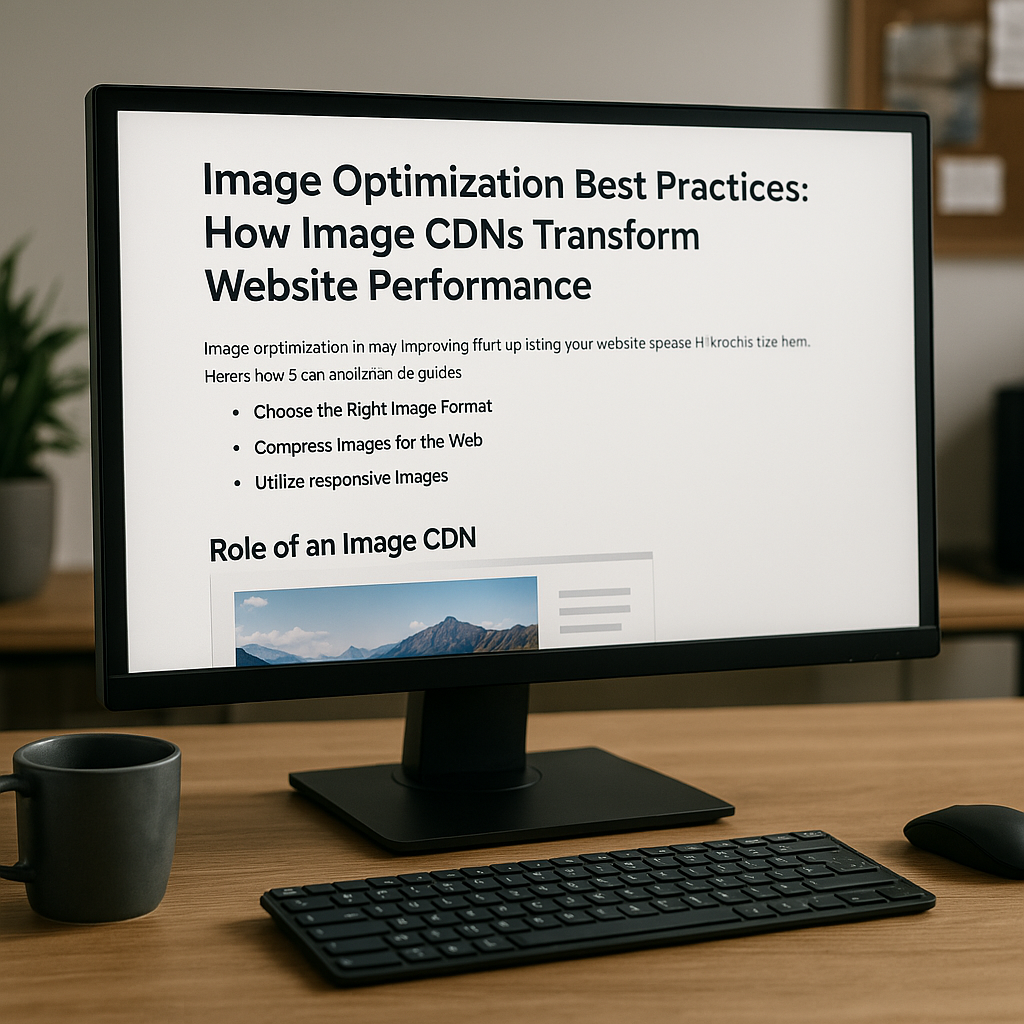Image Optimization Best Practices: How Image CDNs Transform Website Performance

Website performance directly impacts user experience, SEO rankings, and conversion rates. Images, while essential for visual appeal and engagement, frequently slow down page load speeds. Properly optimizing images and leveraging an Image Content Delivery Network (CDN) significantly enhances your site's performance. This article explores image optimization best practices and how image CDNs dramatically improve website speed and efficiency.
Why Image Optimization Matters
Images constitute a large part of web content. Unoptimized images result in slow loading times, poor user experience, increased bounce rates, and decreased SEO rankings. Effective image optimization reduces file sizes, maintains visual quality, enhances load speeds, and boosts overall website performance.
Impact on SEO
Google prioritizes fast-loading pages as a key ranking factor. Slow-loading images negatively impact your website's position in search results, reducing visibility and organic traffic.
Essential Image Optimization Techniques
1. Select the Appropriate Image Format
Choosing the right image format is critical:
- JPEG: Ideal for detailed photographs due to effective compression.
- PNG: Best for graphics that require transparency.
- WebP and AVIF: Modern formats offering superior compression and quality, ideal for web usage.
2. Effective Compression and Quality Settings
Achieve the optimal balance between quality and file size using tools like ImageOptim, TinyPNG, or built-in CDN optimization services.
3. Implement Responsive Images
Use responsive images with HTML attributes such as srcset and sizes to deliver optimized images for various device resolutions.
<img
srcset="image-320.jpg 320w, image-640.jpg 640w, image-1024.jpg 1024w"
sizes="(max-width: 640px) 320px, (max-width: 1024px) 640px, 1024px"
src="image-640.jpg"
alt="Example of responsive image">
4. Utilize Lazy Loading
Improve initial load times by delaying the loading of images until they enter the viewport.
<img src="image.jpg" loading="lazy" alt="Lazy loaded image">
Exploring Image CDNs
An Image CDN specifically optimizes image storage, management, and delivery. Unlike standard CDNs, Image CDNs offer advanced features such as dynamic resizing, automatic format conversions, and adaptive delivery based on device and network conditions.
Advantages of Image CDNs
- Enhanced Delivery Speed: Images load rapidly from the closest server to the user.
- Automatic Optimization: Images are automatically resized, compressed, and converted to optimal formats.
- Scalability: Handles traffic spikes efficiently, ensuring consistent performance.
- Cost Reduction: Optimized images lower data usage, significantly cutting bandwidth expenses.
Implementing Image CDNs Effectively
Selecting an Appropriate CDN
Choose a CDN provider offering:
- Automatic resizing, smart cropping, and dynamic image processing.
- Support for modern formats (WebP, AVIF).
- Extensive caching and a robust global network.
URL-based Image Transformations
Efficiently manipulate images directly through URL parameters:
<img src="https://cdn.example.com/image.jpg?w=600&format=auto" alt="Optimized CDN image">
Utilizing Smart Detection
Leverage CDN capabilities for device detection, network speed assessment, and browser compatibility to dynamically deliver optimized images.
Advanced CDN Techniques
Automatic Format Selection
Let the CDN automatically select the best image format based on browser compatibility.
Real-time Image Processing
Enable real-time image editing, including cropping, resizing, watermarking, and overlays.
Monitoring and Enhancing CDN Performance
Regularly evaluate CDN effectiveness using tools like:
- Google PageSpeed Insights: Detailed suggestions for improving performance.
- GTmetrix: Comprehensive reports on image optimization and CDN efficiency.
Use insights gained from these tools to refine your CDN settings.
Common Challenges and Solutions
- Cache Management: Regularly update CDN caches to prevent outdated image delivery.
- Browser Compatibility: Provide fallback images for browsers that don't support newer formats.
- Maintaining Image Quality: Continuously test across multiple devices and resolutions to maintain consistent quality.
Future-Proofing Your Image Optimization Strategy
Stay informed on evolving trends, such as:
- New image formats like JPEG XL and AVIF.
- Emerging AI-driven optimization technologies.
- Greater emphasis on mobile-first and adaptive content delivery.
Regularly updating your optimization strategies ensures continuous improvement and future compatibility.
Conclusion
Optimizing images and utilizing an Image CDN significantly enhances your website's performance. Efficiently delivering optimized, responsive, and high-quality images improves user experiences, boosts SEO rankings, and ultimately increases conversions.
Stay tuned for updates on advanced image optimization techniques and evolving CDN technologies to ensure your website remains fast and competitive.
